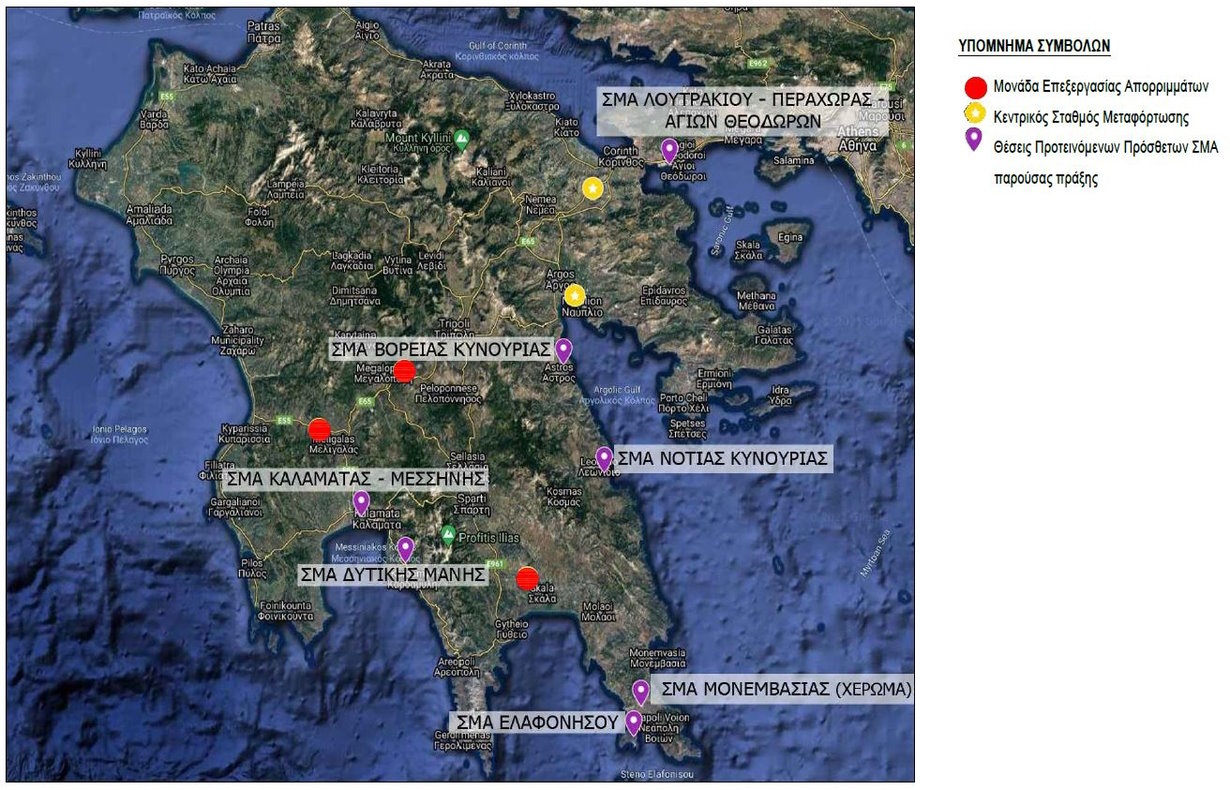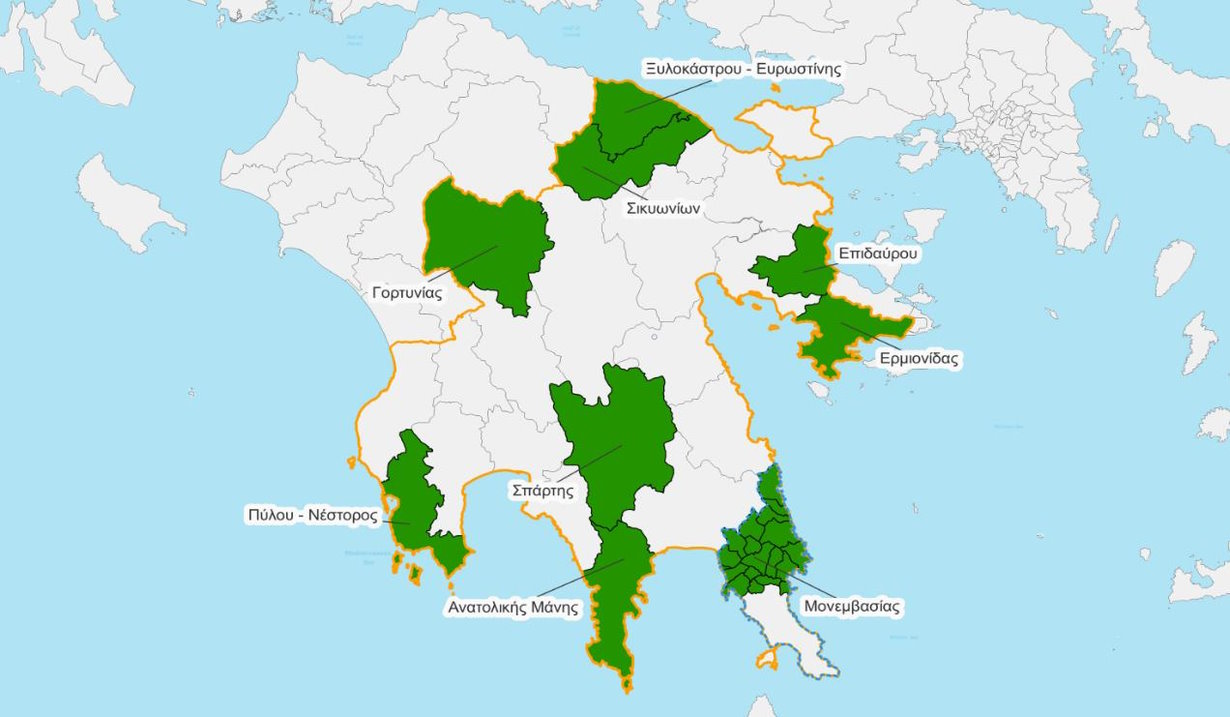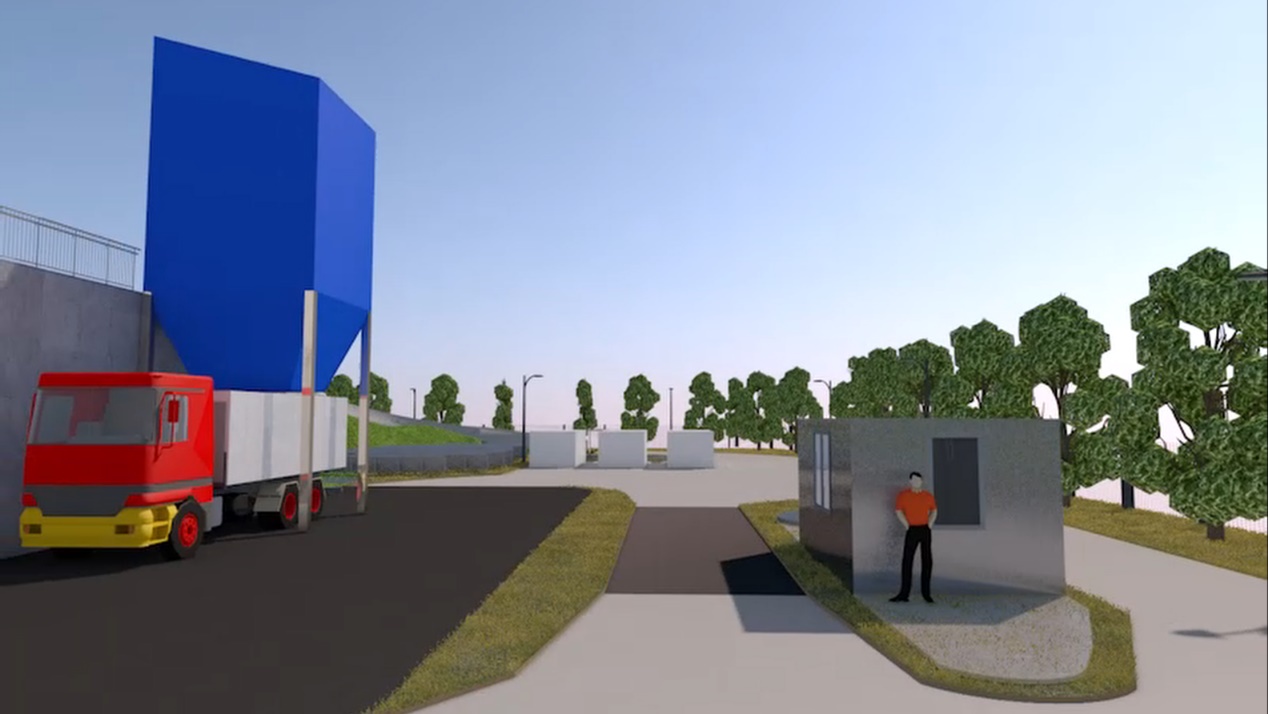Sidebar
Main Menu (en)
SMA (Waste Transhipment Stations)
Waste Transhipment Stations
Municipalities are in charge of collecting and transporting waste from the designated and organised collection points. Municipal waste is transported in specific collection and transportation vehicles, transhipped and temporarily stored in waste transhipment stations, to be then transported to the Waste treatment unit.
From the SMA, compressed solid waste is deposited to sanitary landfills to be buried.
FODSA of Peloponnese has designed and submitted for funding under the Operational Programme «Transport infrastructures, Environment and Sustainable development 2014-2020» two projects for the construction of fifteen (15) Waste transhipment stations (SMA), in order to reduce transportation cost to SDIT units.
Construction of seven (7) SMAs was approved to serve the Municipalities of Loutraki, Agioi Theodoroi, Perachora, North Kynoria, South Kynouria, Monemvasia, Western Mani, Elafonisos, Kalamata and Messini; eight (8) more shall be integrated in the Municipalities of Monemvasia, Gortynia, Epidaurus, Xilokastro, Evrostini, Sykiona, Eastern Mani, Sparti, Pylos- Nestoros and Ermioni.
The Waste transhipment Stations (SMA) are located near the sources of the waste, so that the refuse collection vehicle of the respective municipalities cover the shortest possible distance to the respective SMAs, where they unload and return to the collection spot.
For the transhipment and transportation of municipal waste to the final recipients in the served Municipalities, as foreseen by the PESDA of Peloponnese, there will initially be constructed seven (7) Waste Transhipment Stations (SMA) at the following locations:
- Municipality of Loutraki, Perachora, Agioi Theodoroi, in Agioi Theodoroi
- Municipality of North Kynouria, at the location «Karachasani » outside the settlement of Astros
- Municipality of South Kynouria, at the location «Tsoumias » outside the settlement of Leonidio
- Municipality of Monemvasia, at the location «Cheroma » outside the settlement of the Community of Agioi Apostoloi, Municipal Unit of Voion
- Municipality of Western Mani, at the location «Dyo petres» commnity of Prosilio, Municipal unit of Lefktro
- Municipality of Elafonisos, outside the settlement of Elafonisos
- Municipality of Kalamata, outside the settlement of Antikalamos (to serve the Municipalities of Kalamata and Messini)

Municipalities Serving the Region of Peloponnese

The locations of the 7 SMAs in the Region of Peloponnese
Below are the (8) additional Waste Transhipment Stations (SMA):
- Municipality of Pylos-Nestoros at the location «Karaouli» or «Karavouli»
- Municipality of Monemvasia, at the location «Cheilorema», outside the municipal unit of Molaoi
- Municipality of Eastern Mani, at the location «Ftereas»
- Municipality of Ermioni, at the location «Kampos», Municipal unit of Kranidi
- Municipality of Sparti, outside the settlement of «Skoura», Skouras, Municipal unit of Therapna
- Municipality of Xilokastro, at the location «Kolones» or «Velanidies», Municipal district of Xilokastro (serving the Municipalities of Xilokastro and Eurostini)
- Municipality of Epidaurus, at the location «Krani», Municipal district of Lygourio
- Municipality of Gortynia, outside the settlement of Dimitsana, Municipal unit of Dimitsana, at the location «Katsouvelia» (DRYMONAS) as indicated in the picture below.

Municipalities serving the Region of Peloponnese

The locations of the 8 SMAs in the Region of Peloponnese
* * * When completed, the Waste Transhipment Stations will improve cleaning process and waste transport, will contribute to protection of the environment and reduce management costs. * * *






